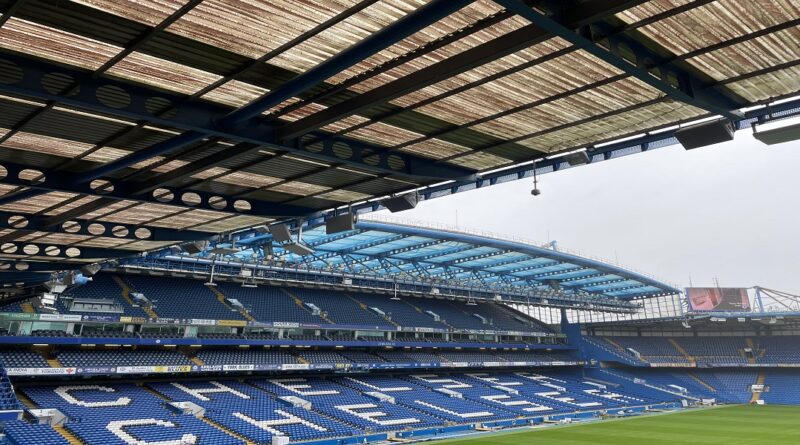Paul Winstanley and Laurence Stewart interview: ‘We had to make changes to put the club in a better position.’
From the official Chelsea FC website:
Paul Winstanley and Laurence Stewart. You’ll know the names, not the people behind them. It’s why our co-sporting directors have decided to sit down and discuss their time at Chelsea so far. There is a lot to talk about…
The late-morning sun flickers across the desk as Winstanley and Stewart, coffees in hand, take their seats. They cut relaxed figures, although the stresses and strains of an intense summer transfer window still linger.
Winstanley joined Chelsea from Brighton and Hove Albion in December. Stewart arrived from Monaco in February. Both understood the job in hand at Stamford Bridge: there was significant work to be done on and off the pitch.
‘We knew there was going to be a big transition,’ starts Winstanley. ‘No chance to sit back and relax, that’s for sure. Did we think we would oversee a Premier League record of transactions? Probably not.
‘But the average age of the squad was high, we had players with contract issues which had been inherited from an ownership change, and then there were players who made it clear they wanted to leave. That needed to be addressed.’
Yet no decision was taken in haste, be it the appointment of Mauricio Pochettino as head coach or the recruitment of players.
’The volume of players out, the volume of players in, the turnaround has been significant,’ explains Stewart. ‘But there were certain things we had to achieve for the club, and for the group, this summer because results on the pitch at the end of last season made it clear it wasn’t working. We had to make changes to put the club in a better position. We feel we’ve done that.’
Arguably the biggest decision Winstanley and Stewart faced ahead of the 2023/24 campaign was who would lead the men’s team. That they settled on Pochettino – and the Argentine’s close-knit staff – came after much discussion and careful consideration.
Winstanley says: ‘Laurence and I sat long and hard with the ownership and discussed the type of person and the attributes, a head coach would need to have success at this club. It was a lengthy process and we interviewed several different candidates and different types of people’
Stewart continues: ‘It had to be the right fit in terms of the person, the leadership we needed, the ability and track record of developing players, and of building a team that can compete and perform in the Premier League. These are all things we were looking for.’
Pochettino was confirmed as Chelsea head coach at the end of May. However, it wasn’t until the start of July that he officially began his role. In the three months since, the Argentine and his staff have made a strong impression.
‘It was a huge appointment for the club and everyone here at Cobham,’ says Winstanley. ‘We felt Mauricio was the right fit and we are even more impressed having spent these early months with him. The way he has gone about it day-to-day, he’s had an impact with the players, staff, Laurence and I, and the ownership.’
Throughout the summer transfer window, which closed on September 1, communication between Stewart, Winstanley and Pochettino was constant. Countless conversations took place at Cobham and during our pre-season tour of the United States. The work undertaken on the squad was collaborative.
It has resulted in a new-look men’s squad, the average age of which is a little over 22 years old. It is a group built to compete under Pochettino in the Premier League this season, but also in the years ahead.
‘The ownership has supported us bringing in the players we have,’ says Stewart. ‘The talent we have in the group is really exciting and the dynamic day-to-day is really pleasing. That was one of our objectives, something we wanted to develop after last season.
‘The combination of the players we’ve brought in and the coaching staff is one we’re really happy with. We’ve got a lot of talent, now we need to let that develop and grow.’
Winstanley adds: ‘There will always be flexibility in terms of the players we bring to the club, whether that is their personality, squad role, or age. This summer, a lot of players were brought in who are under 23 years old, but many of these already have a lot of top-level experience.
‘With this group of players, the excitement is building. You can feel it daily. There will be setbacks, there always are, and it can take time: new players, new head coach, different philosophy, and many of the players not being able to complete a full pre-season for one reason or another.
‘It won’t happen overnight, that’s normal, but we are all excited about what the short-, medium- and long-term looks like with this group with Mauricio leading it.
‘We want players that want to fight for the club, that want to fight every day for each other, for results, for the supporters, for the staff. This club knows how to win, it knows how to succeed.
‘So it’s important to bring in players that align with building something special here and we will get stronger as a team and club as we head deeper into the season.’
The hard work doesn’t stop for Winstanley and Stewart now the transfer window is closed. First, they will reflect and review the transfer business concluded in the summer. Then planning for future windows begins. Squad building is a never-ending process, a continuous craft.
‘We will plan two transfer windows in advance,’ explains Winstanley. ‘We can’t be reactionary. We’ve got to look at the whole squad, the players that are out on loan, and opportunities we can give to players in the Academy. That is the player puzzle we’ve got to pull together.’
Stewart continues: ‘We’ll go through that review and reflection process now as we continue with the plan. Then, as we get closer to January, we look at things again. Is there anything urgent we need? Is anything pressing? Or is there an interesting opportunity?’
In the afterglow of the summer window, transfers have naturally dominated the conversation. Yet Winstanley and Stewart’s roles stretch far beyond recruitment. They oversee all football staff at Chelsea, including the Women’s team and the Academy, and want to ensure each receives the same support.
‘One of the major objectives we have is to build a highly-skilled team here at Cobham,’ explains Stewart. ‘As football clubs develop, everybody needs more support, more information. We want to build on the relationship with the Women’s team and the Academy to make sure all our staff are working together and are achieving best practices.
‘There has been a lot of work in that area that doesn’t get seen because transfers take all the headlines, but we are happy with the progress we’ve made. The bigger picture to make sure the training centre here at Cobham is at the forefront of training centres. We have the support from the ownership to keep moving us forward on that front.’
Work has been undertaken this summer improving facilities for the Women’s team at Cobham. More is in the pipeline as Emma Hayes attempts once again to guide her side to the Women’s Super League title.
‘Emma has done an incredible job and created a very strong culture,’ says Winstanley. ‘We are keen to soak as much of that up as we can. We want to give broader resources to the women’s team and learn from the success Emma has had.
‘We will support her and the team moving forward as we look to continue to support the growth the women’s game.’
The work done by those in the Academy also remains pivotal to the club’s present and future. This summer, Reece James was named club captain, Levi Colwill signed a new long-term contract, and four other Academy graduates are part of the first-team squad.
‘Reece is someone that you can see has a real passion for the club,’ Stewart says. ‘He understands what the club is about, has seen success here and wants it again. So as a reference for the players, for the supporters, and the wider public, he represents Chelsea really well.
‘Mauricio was heavily involved in that decision and has developed a very strong working relationship with Reece, which is great.’
‘We’re steeped in history with the players that have come through and had success, so it is a major part of our thought process,’ adds Winstanley. ‘When squad planning, we’re always working with Neil [Bath], Jim [Fraser], and the other Academy staff to identify which pathways we need for the players coming through.’
It is clear throughout the interview the natural rapport Winstanley and Stewart have developed. It served them well over the summer transfer window and should continue to do so as their ambitions for the club continue to take shape.
‘When I joined the club,’ recalls Stewart, ‘you could feel the club had been through a lot of change. It was natural in that respect there was a little trepidation from people about what the future looks like.
‘Now we’re coming out of that period of change on and off the pitch. We have the building blocks in terms of the staff, the skills, and the players, that we think can take us forward. It’s very exciting.’
‘Chelsea Supporters Group’ can also be found on Twitter and Facebook




